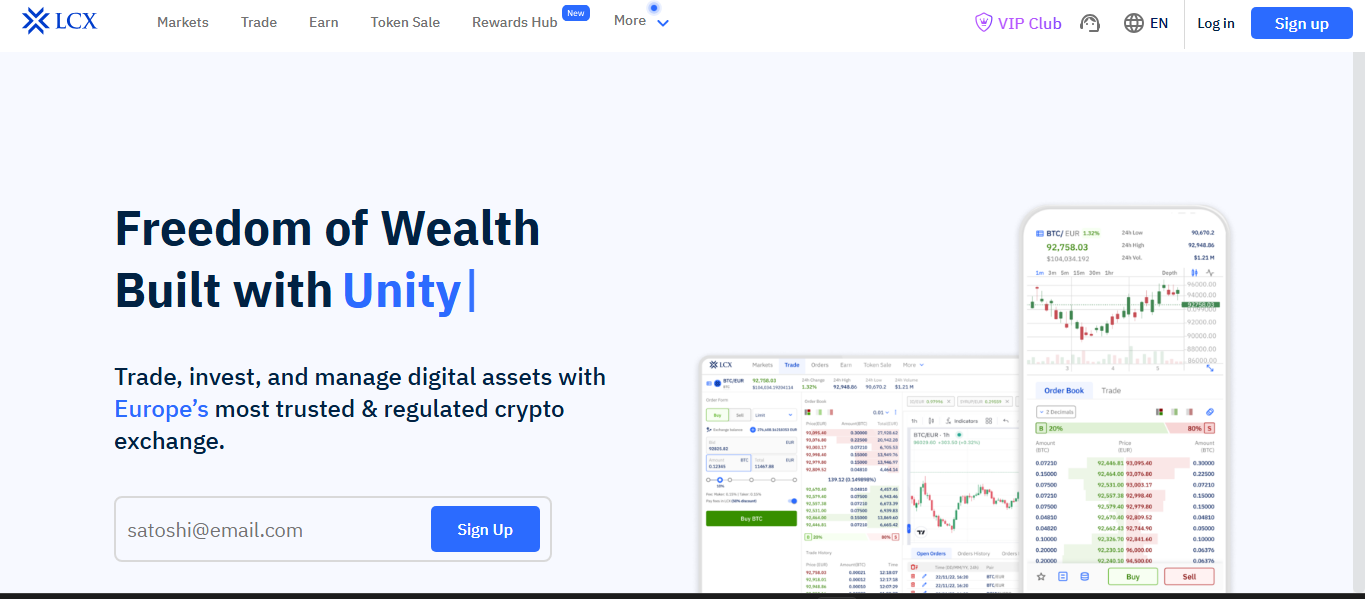LCX Exchange Review

Who they are
LCX kicked off in 2018 in the small but crypto-friendly country of Liechtenstein. It’s one of the few platforms actually licensed under a dedicated blockchain law, which means you get clear regulatory standards baked in. The exchange was designed from the start to bridge retail and institutional needs, with a heavy lean on compliance. It ties directly into European banking networks, letting you move euros or dollars onto the platform with relative ease. The native LCX token sits at the center - it cuts your trading fees, unlocks early Launchpad sales, and pays out staking perks.
What they offer
LCX runs both spot markets and perpetual futures. You’ll find about 50 to 70 coins paired mainly against EUR, USD or BTC. Orders are handled via a straightforward web terminal or through API endpoints for algo traders. Fiat on-ramps work via SEPA transfers or dollar wires, connecting neatly to EU and global bank accounts.
Holding LCX tokens gives you fee discounts that scale up with your balance, plus a first crack at new token sales. The platform is also serious about KYC and AML, aligning tightly with European standards. That makes it attractive for traders and small funds who care about clear rules and formal compliance.
Quick snapshot
This setup places LCX as a regulated, euro-friendly choice that blends basic trading needs with token-based incentives.
Strengths and trade-offs
Pros
- Fully licensed under Liechtenstein’s blockchain rules, offering serious legal clarity
- Supports both spot and perpetual markets, so you can keep everything under one roof
- Direct EUR and USD deposits through bank networks cut out extra conversion steps
- LCX token rewards - lower fees, staking, early project allocations
- Structured for institutions too, with APIs and clean regulatory alignment
Cons
- Trading depth is fine on big pairs, but fades on smaller coins
- Around 50-70 listings means less choice than on global mega-exchanges
- The terminal is solid but doesn’t have pro-level features like deep data overlays or social trading
- Derivatives volume is much thinner than on powerhouse futures platforms
- Customer support is lean, so responses can slow during big market swings
Using LCX day to day
Signing up means going through standard ID checks, true to its European compliance roots. Once verified, you can wire in euros or dollars, or deposit crypto to start trading. The platform sticks to familiar order book setups - limit, market, stop - making it easy to switch over if you’ve used other exchanges. Holding LCX in your wallet shaves off a chunk of trading fees and bumps you into better staking rewards. For futures, the leverage isn’t sky-high, and the markets are quieter, but it’s enough for basic hedges or light directional plays. If you run bots or scripts, the API keeps things flexible.
Overall, it’s a clean experience built more for regulatory peace of mind than flash. It’s direct, euro-integrated, and aims at users who care about licensed environments.
Final take
LCX Exchange is a sharp fit if you’re based in Europe or just want solid regulatory grounding, direct fiat rails, and a platform that combines spot and futures without messing around with shady compliance. It won’t serve as your giant altcoin hunting ground or high-leverage casino. But it does hit a useful middle point - enough coins, formal oversight, decent staking and Launchpad incentives.
If your style leans toward staying inside clear legal guardrails, managing trades in euros or dollars, and enjoying some token perks on top, LCX does the job well. For chasing exotic pairs or massive futures volume, you’ll still look elsewhere. But for most traders or smaller institutional desks wanting an EU-anchored option, LCX is a smart, practical pick.
Disclaimer
“This content is for informational purposes only and does not constitute financial advice. Please do your own research before investing.”
.png)







%203.svg)
%203.svg)




















